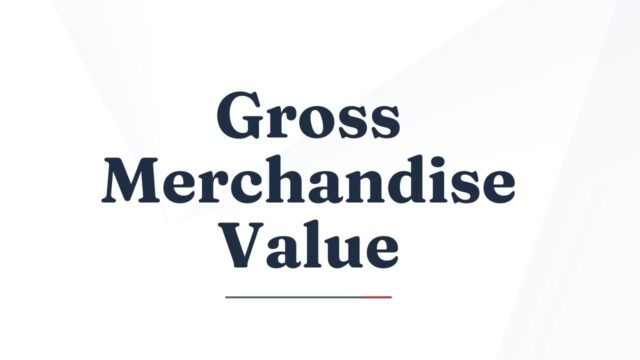
What is Gross Merchandise Value (GMV)?
Gross Merchandise Value, or GMV, is a metric often used in e-commerce to measure the total value of all goods sold on a platform over a given period of time. It is calculated by adding up the prices of all items sold, minus any promotional discounts or coupons. GMV can be used to evaluate the performance of an online store, as well as the overall health of the e-commerce market. For example, if the GMV of a particular store increases over time, it may indicate that the store is gaining popularity with consumers.
Similarly, if the GMV of the entire e-commerce market is growing, it likely means that more people are shopping online. However, it is important to note that GMV is not a perfect metric, as it does not take into account factors such as shipping costs or returns. Nevertheless, it remains a valuable tool for those who want to get a sense of how much money is changing hands in the world of e-commerce.
How is GMV calculated?
To calculate GMV, simply multiply the quantity of each item sold by its unit price. For example, if a marketplace sells 100 items at $10 each, then the GMV for that period would be $1,000. GMV is often used as a measure of a marketplace’s success, as it represents the total amount of revenue generated through transactions on the platform. However, it is important to note that GMV does not take into account the costs associated with stocking and shipping items, so it is not an accurate measure of profitability.
What factors influence GMV?
There are several factors that can influence GMV, including the number of buyers and sellers on a platform, the average transaction value, and the mix of goods sold. For example, a marketplace that mainly sells high-ticket items will have a higher GMV than one that sells lower-priced items, even if the number of transactions is similar. Marketplaces can also see changes in GMV due to external factors such as economic conditions or seasonal trends. As a result, it is important to consider all of these factors when assessing GMV.
Examples of how to increase GMV
There are many ways a business can increase their GMV, or gross merchandise value. One way is by increasing the price of their goods or services. This will obviously result in a higher GMV, but may also result in fewer sales. Another way to increase GMV is by increasing the quantity of goods sold. This can be done by offering deals and discounts, or by running a promotional campaign. Finally, a business can also increase their GMV by simply selling more expensive items. Of course, this option is not always possible or practical. However, if a business has the opportunity to sell high-end merchandise, they should definitely take advantage of it. By following these tips, any business can increase their GMV and boost their bottom line.
Benefits of increasing GMV
Gross Merchandise Value (GMV) is a key metric for ecommerce businesses. It represents the total value of all goods sold on a platform over a given period of time. Gross merchandise volume is usually used to measure the performance of an ecommerce business as a whole or specific product categories. Increasing GMV can have a number of benefits for businesses, including:
- Increasing revenue and profitability: Obviously, increasing GMV will lead to increased revenue and profits for businesses. This can help businesses to invest in expansion and growth, as well as provide a financial cushion in case of unexpected expenses or economic downturns.
- Attracting new users and retaining existing ones: A platform with a high GMV is often seen as more trustworthy and valuable by users. This can lead to more users signing up and using the platform, as well as existing users spending more money on the platform. In turn, this can lead to even more growth for the business.
- Improving relationships with suppliers: Suppliers are often more willing to work with platforms that generate a lot of sales. This means that Platforms with high GMVs can usually get better terms from suppliers, such as lower prices or longer payment terms.
Challenges of increasing GMV
However, increasing GMV can be a challenge, as it requires not only attracting new buyers but also convincing existing buyers to spend more money on the platform. Additionally, GMV growth can be limited by the number of items available for sale on the platform. To overcome these challenges and increase GMV, companies must focus on expanding their selection of goods, improving the user experience, and offering incentives to encourage spending. With a well-rounded strategy, increasing GMV is possible.


































